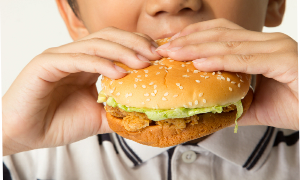
Perhaps you have heard that the poor are typically less healthy than the affluent in America today, but have you ever stopped to think why that may be? Maybe the answer seems simple, unhealthy food is the cheaper option. This is true, but why? Is it the law of nature that a cheeseburger is cheaper than a salad? Absolutely not. However, somehow, it is the law here in America. I propose that this is not “just the way it is”, but instead this price divide stems from meticulous choices by our government and policy makers. I implore you to ask yourself why low income means low nutrition, and why we pass laws that enact subsidies to make unhealthy foods cheap and fresh foods seem to be only a privilege of the elite.
This issue is complex, and in no way, shape, or form is there a one stop shop for a quick fix. However, it is important for college students to know what’s up with nutrition insecurity, and thus be given a voice to use in the name of change. Let’s break it down.
The problem: The lack of affordability of nutritious food in America.
The cause: The farm bill–most of it goes to subsidies for the five biggest commodity crops: corn, cotton, rice, wheat and soybeans. Notice that this list does not include fresh fruits and veggies but rather crops that require extensive processing before consumption.
The goal: Increase accessibility/affordability of nutritious, local, food in the hopes reducing obesity and nutrition related chronic diseases among Americans. Give children from low income families a chance to succeed and grow up to be healthy by refinancing food subsidies.
How: College students can use resources available to us to make waves of change.
This all sounds simple enough, right? Well let me divulge on why this issue is such a prominent and seemingly permanent one.
Why can’t Americans can’t afford to eat healthy?
Every five years, congress rewrites and passes the farm bill which dictates about 489 billion dollars each 5 year cycle in federal spending. The bill was introduced in 1933 as part of President Roosevelt’s New Deal legislation in response to the Great Depression. The goal of the program was to temporarily sustain farmers by paying them extra when crop prices were low. Nearly eight decades later, the benefits flow primarily to large commodity producers. We are essentially throwing cash at big agribusiness, which is as profitable as ever. In fact, according to the U.S. Department of Agriculture, the top ten percent of the wealthiest farmers in the country receive 74 percent of the subsidies. These crops happen to constitute the key ingredients in fast food. The mass production of corn is in turn made into high fructose corn syrup found in sugary drinks such as sodas, and animal feed that sustains “factory farming” of livestock. This meat is higher in fat because it has been fed corn rather than grass, kept confined in a space not large enough to walk around, and pumped full of antibiotics and hormones to help it grow larger, faster. Thus subsidization manufactures a price inequality that helps a happy meal from McDonald’s undercut real, wholesome foods.
On top of all this, our media glorifies a culture of gluttony. We must consider who ultimately benefits from making an XXL Coca-Cola look sexy on TV. I propose that the beneficiaries are once again, big agribusiness and of course the the companies profiting from product sales, but most definitely not by any means the consumer. Thus we can establish that American policy and media are huge contributors to the polarity of access to nutrition by rich vs. poor.
What are the effects on our nation?
The poor become even more disadvantaged. A 2009 study that focused on a nationally representative sample of more than 12,000 children aged 2 to 19 years found that rates of severe obesity were approximately 1.7 times higher among poor children and adolescents (Skelton et al., 2009). And according to feedingamerica.org, currently more than half (58%) of the households served by the Feeding America network of food banks have at least one member living with high blood pressure, and more than one-third (33%) has a member with diabetes.When faced with chronic disease, many economically unstable families do not have access to healthcare. Therefore the poor are cut with a double edged sword: they only have access to food that makes them sick, but they do not have access to medical care when they do get sick. The paradox is paralyzing and creates a huge inequality that we have the power to change.
What can we do?
It is not out of your hands. It’s in your hands, your hearts, and your pockets
- Educate yourself on the farm bill and food subsidies: knowledge is power.
- Take action when you find something that bothers you: write to congress, protest, volunteer for organizations who are already responding to the issue. We can change the next farm bills incentives.
- Put your money where your mouth is: buy local, organic, fresh fruits and give your dollars to the farmers who need it to flourish, not those who are reaping millions of taxpayer dollars every year.
We have power but that power is useless unless we harness it through education and action!
Clearly change is not as easy as 123. Food subsidies provided by the farm bill are deeply rooted in the nature of American capitalism. Affordability of healthy food is dependent upon a change in policies that have withstood huge social and political movements towards equality in marriage, racial and gender equality etc. I propose that human equality is greatly dependent health, and that it is unjust for American government to uphold policies that make the less wealthy the less healthy.
As college students, it is OUR responsibility to change the trajectory of our nation’s health. We are the next policy writers, the next activists, the next farmers, the next parents. Will we sit and passively watch as schools serve our children ultra processed foods that are detrimental to their health and thus, their future? Will we compromise our own health and that of our families if our paycheck does not amount to the price of whole, nutritious foods? Will we allow the gap between rich and poor to widen as our public policy stagnates? We ought not, we will not.



